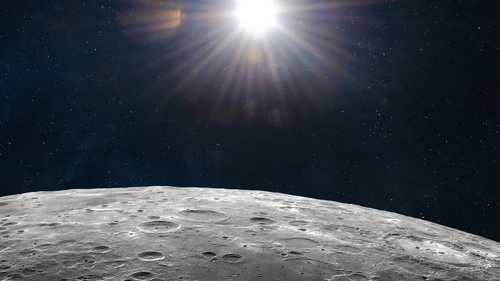A private US company is attempting to land a spacecraft close to the moon’s South pole. The spacecraft will carry scientific instruments, including a hopping robot and the first lunar mobile communication system to the moon. US based Intuitive Machines is working with the US space agency NASA to look for ice and water on the surface of the moon. The spacecraft ‘Athena’ is currently orbiting the moon and will soon attempt to land on the lunar surface, approximately 160 km away from the South pole in an area of the lunar Highlands called ‘Mons Mouton’.
NASA Sends Instruments Privately
The jumping robot on board the spacecraft is called Micro Nova Hopper or Grace. The robot will leave and fly across the lunar surface to reach a large crater under permanent shade from the sun’s rays. It can fly up to hundred metres in altitude and can travel up to 1.2 miles. A camera attached to the robot will take the first images of the interior of the crater. Very low temperature inside the crater can be a conducive space to look for evidence of ice.
The IM-2 mission is also carrying three scientific instruments developed by NASA, which include a drill called Trident that will drill up rocks to reach the surface under the moon to see for evidence of ice. Another instrument is called a mass spectrometer that analyses any gases released inside the crater. Thirdly, a type of antenna developed with Nokia will also be planted on the moon. This antenna uses the same 4G cellular technology as used on earth.
In the longer term, NASA’s goal is to take humans to the lunar surface. The agency also hopes to send astronauts in 2027 with the Artemis program. Experts want to explore options for building settlements and find out if the lunar surface can offer water or ice, which can be used for drinking water, and also can potentially turn into oxygen.
To make this happen, NASA is partnering with a range of private companies that transport spacecraft and instruments to the moon for the US space agency. This method is cheaper than developing and shooting their own space rovers.

